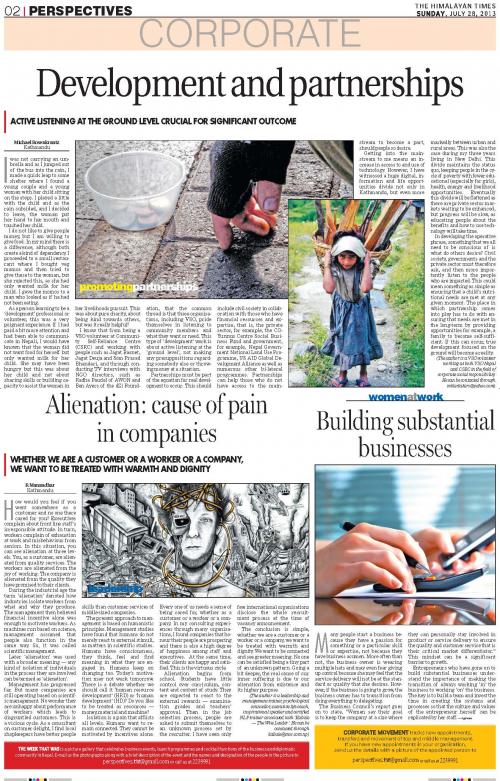
I wasn’t carrying an umbrella and as I jumped out of the bus into the rain I made a quick leap to some shelter where I found a young couple and a young woman with her child sitting on some steps. I played a little with the child and as the rain subsided, and I decided to leave, the woman put her hand to her mouth and touched her child.
I don’t like to give people money, but I am willing to give food. In my mind there is a difference, although both create a kind of dependency. I proceeded to a small restaurant where I bought veg momos and then tried to give these to the woman, but she rejected this, as she had only wanted milk for her child. I gave the momos to a man who looked as if he hadn’t been eating.
As a person learning to be a “development” professional/volunteer this was a very poignant experience. If I had paid a bit more attention and had been able to communicate in Nepali, I would have known that the woman didn’t want food for herself but only wanted milk for her child. She may have been hungry but this was about her child and not about sharing skills or building capacity to assist the woman in her livelihoods pursuit. This was about pure charity, about being kind towards others, but was it really helpful?
I know that from being a VSO volunteer at Community Self-Reliance Centre (CSRC) and working with people such as Jagats Basnet and Deuja and Som Prasad Bhandari, and through conducting TV interviews with NGO Directors, such as Radha Paudel of AWON and Ben Ayers of the dZi Foundation, that the common thread is that these organisations, including VSO, pride themselves in listening to community members and what they want/need. This type of “development” work is about active listening at the “ground level”, not making any presuppositions regarding somebody else or throwing money at a situation.
Partnerships must be part of the equation for real development to occur. This should include civil society in collaboration with those who have financial resources and expertise, i.e. the private sector e.g. the CG-Yunnus Centre Social Business Fund and government, e.g. Nepal Government National Land Use Programme, US AID Global Development Alliance as well as, numerous other country bi-lateral programmes. Partnerships can help those who don’t have access to the mainstream to become part, should people so desire.
Becoming part of the mainstream to me means an increase in access to and use of technology. However, I’ve witnessed a huge digital, information and life opportunities divide not only in Kathmandu, but even more markedly between urban and rural areas. This was also the case during my three years living in New Delhi. This divide maintains the status quo, keeping people in the cycle of poverty with fewer educational (especially for girls), health, energy and livelihood opportunities. Eventually this divide will be flattened as there are private sector markets waiting to be enhanced, but progress will be slow, as educating people about the benefits and how to use technology will take time.
In development the operative phrase, something that we all need to be conscious of is what do others desire? Civil society, governments and the private sector must therefore ask, and then more importantly listen to the people who are impacted. This could mean something as simple as ensuring that a child’s nutritional needs are met at any given moment. The place in which partnership comes into play has to do with ensuring that needs are met in the long term by providing opportunities for, e.g. a family to become self-sufficient. If this can occur, true development focused on the ground will become a reality.










Add new comment